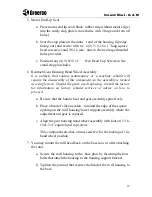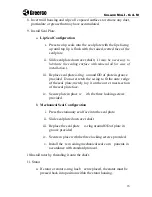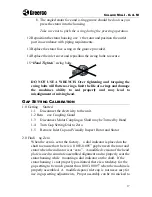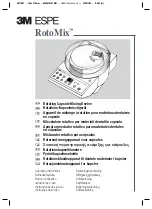
C
OLLOID
M
ILL
I. O. & M
2
E
QUIPMENT
D
ESCRIPTION
You have just purchased a Greerco
®
Colloid Mill. The Greerco
®
Colloid
Mill is a high speed, high shear mixer capable of batch or in-line processing.
Although a “colloid m ill” is comm only considered a particle destruction
unit, it is actually a
dispersion
piece of equipment. The machine will blend,
emulsify, de-agglomerate and produ ce a thorough wetting of dispersed
substances resulting in a com pletely homogeneous product. However, the
colloid mill will NOT dry grind.
For example, assuming that the basic p article size in an agglomerated slurry
is 1 to 3 m icrons, a colloid mill set w ith the proper gap clearance is capable
of destroying all the larger agglom erates of those particles to produce a
distribution of that basic particle size . The proper gap se tting, which refers
to the ope ning between the tapered plan e faces of the rotor and stator, can
only be determined by pilot plant or production test runs.
P
RINCIPLE OF
O
PERATION
Like most high shear devices, the Greerco
®
Colloid Mill employs a high -
speed rot or runni ng in close proxim ity to a fi xed stator to perform its
shearing operation. In this colloid m ill, the gap between the rotor and stator
is adjusta ble. Product is processe d as it passes t hrough t he shear zone,
where intense hydraulic and shear forces result in a product that has been
broken down into i ts prim ary particle size and/or the dispersion of the
dispersed phase throughout the carrier phase.
The Greerco
®
Colloid Mill consists of a hi gh-speed, hardened rotor turning
inside a matching, fixed, hardened stator, which is surrounde d by a jacket.
As the rotor turns, the upper blades for ce the material into the first she aring
zone of sharp teeth m illed into the stator. The m aterial then passes through
the second shearing zone where fine serra tions in the rotor channel the fluid,
with increasing velocity, towards th e adjustable gap between the ult
ra-
smooth, lapped, hardened surfaces
of the rotor and stator. Finally,
centrifugal force impinges the fluid against the stator-housing wall for
further refinement.





































